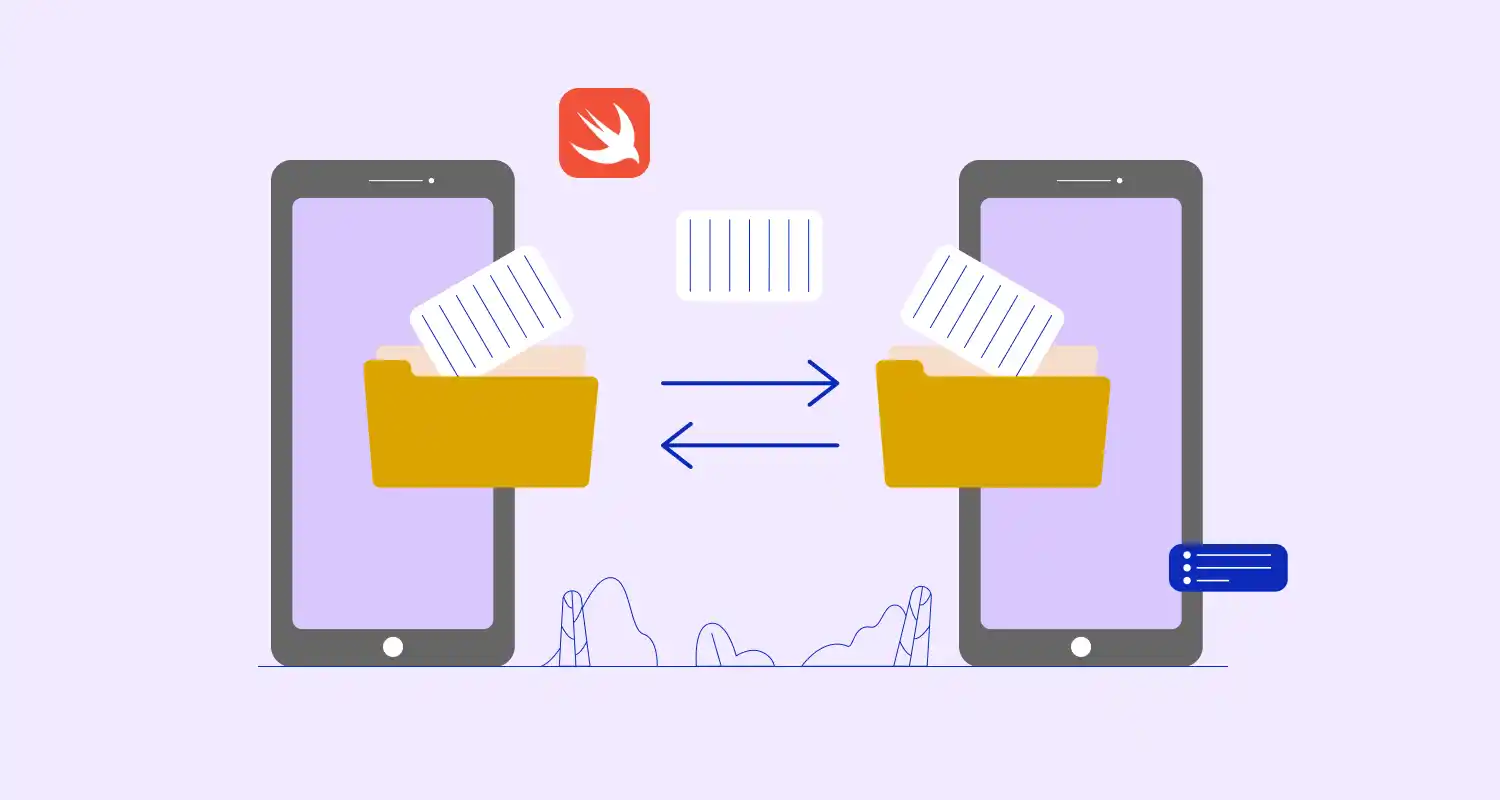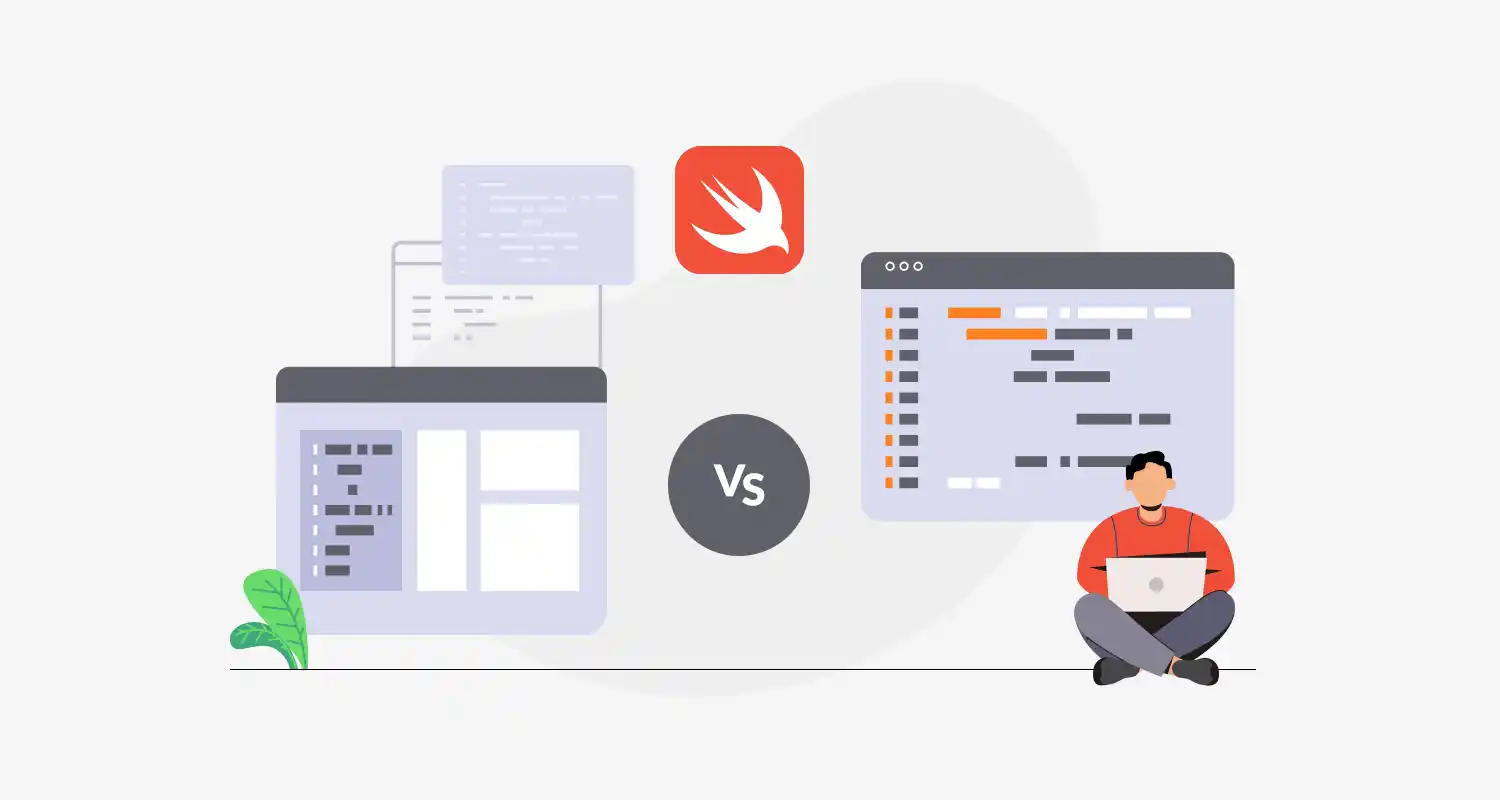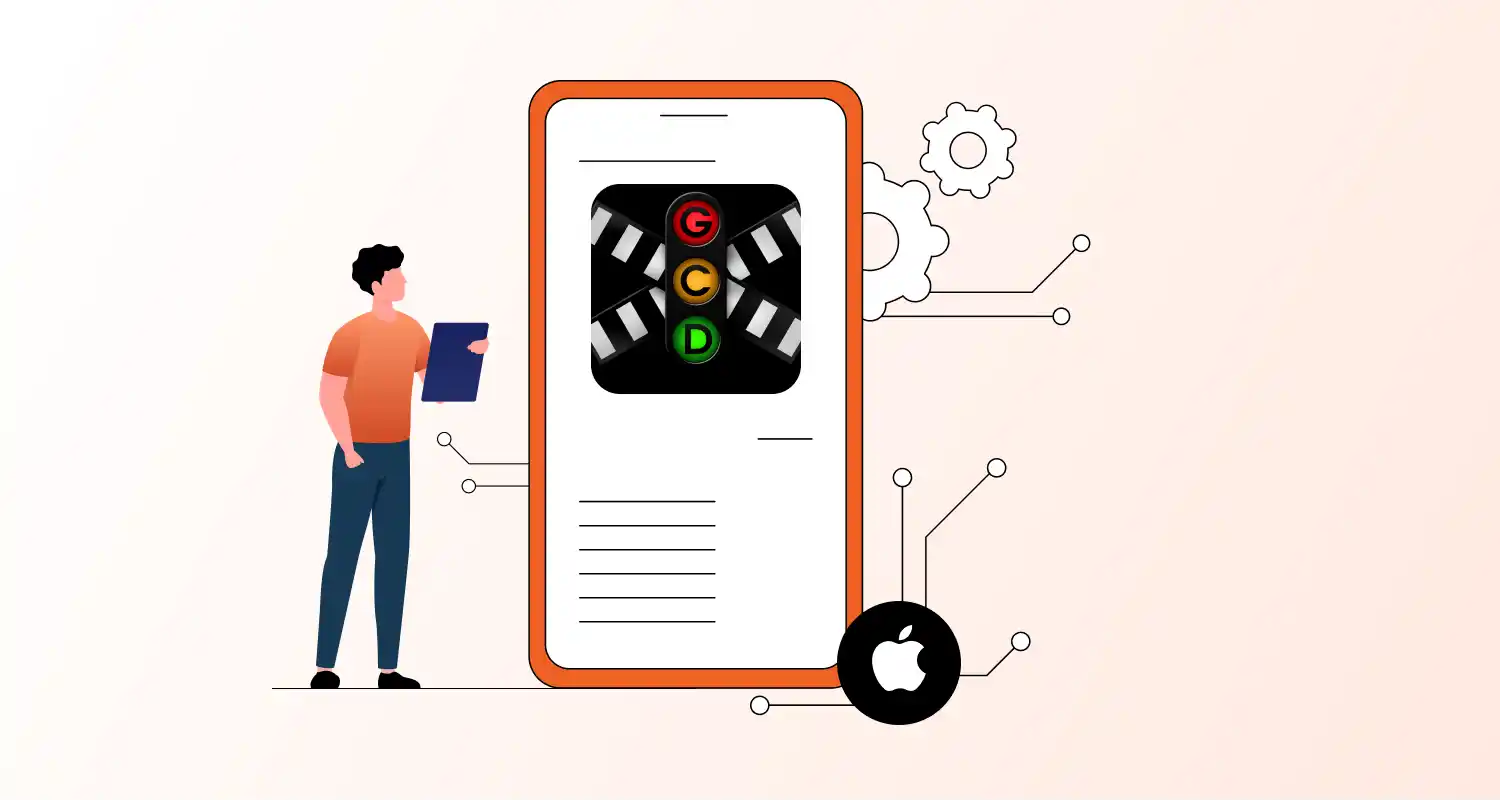When developing iOS apps, code organization is just as important as writing it. Design patterns like MVC, MVVM, and MVP help you separate concerns, reduce code duplication, and make your app easier to test and maintain. Each pattern has its strengths and fits different use cases, depending on the complexity of your app and the tools you’re using UIKit, SwiftUI, Combine, etc. Let’s break down how these patterns work and where they’re most useful.
MVC – Model-View-Controller
Structure
- Model: Business logic and data (e.g., structs, API results, persistence).
- View: UI elements (Storyboard/XIB/SwiftUI/ViewController’s UI code).
- Controller: Connects the Model and View, handles user input, and updates UI.
Problem in iOS: “Massive View Controller”
In iOS, UIViewController often acts as both View and Controller, leading to bloated classes.
Example:
class UserModel { var name: String
}
class UserViewController: UIViewController { var model: UserModel! override func viewDidLoad() { super.viewDidLoad() nameLabel.text = model.name }
}MVVM – Model-View-ViewModel
Structure
- Model: Same as MVC.
- View: UI layer (ViewController or SwiftUI View).
- ViewModel: Transforms model data for the view. Binds data and handles logic/UI state.
Key Concepts
- Data binding: UI updates automatically when ViewModel data changes (especially in SwiftUI or using Combine, RxSwift, or KVO).
- Improves testability by removing logic from the View.
Example:
// Model
struct User { let firstName: String let lastName: String
}
// ViewModel
class UserViewModel { private let user: User var fullName: String { "\(user.firstName) \(user.lastName)" } init(user: User) { self.user = user }
}
// View
class UserViewController: UIViewController { var viewModel: UserViewModel! override func viewDidLoad() { super.viewDidLoad() nameLabel.text = viewModel.fullName }
}MVP – Model-View-Presenter
Structure
- Model: Business/data logic.
- View: Interface layer (UI elements + protocols).
- Presenter: Handles logic and updates the View via a protocol interface.
Communication:
- View ↔ Presenter via protocols.
- Presenter ↔ Model directly.
- View is kept dumb (no business logic).
Example:
// View Protocol
protocol UserView: AnyObject { func showName(_ name: String)
}
// Presenter
class UserPresenter { weak var view: UserView? var user: User init(view: UserView, user: User) { self.view = view self.user = user } func loadUser() { let fullName = "\(user.firstName) \(user.lastName)" view?.showName(fullName) }
}
// ViewController
class UserViewController: UIViewController, UserView { var presenter: UserPresenter! override func viewDidLoad() { super.viewDidLoad() presenter.loadUser() } func showName(_ name: String) { nameLabel.text = name }
}Summary Comparison
| Pattern | Separation | Testability | Common Usage |
| MVC | Low to medium | Poor to OK | Default in UIKit |
| MVVM | High | Very good | Best with SwiftUI or Combine |
| MVP | High | Good | Better than MVC for UIKit |
Final Words
Choosing the right design pattern depends on your project’s needs and the tools you’re using. MVC is simple but often leads to bloated view controllers. MVVM works well with data binding in SwiftUI or Combine, making it great for modern iOS apps. MVP, on the other hand, keeps your views clean and logic-driven through protocols—ideal for UIKit-heavy apps. When you hire iOS developers who understand these patterns, you get code that’s easier to scale, test, and maintain over time.





